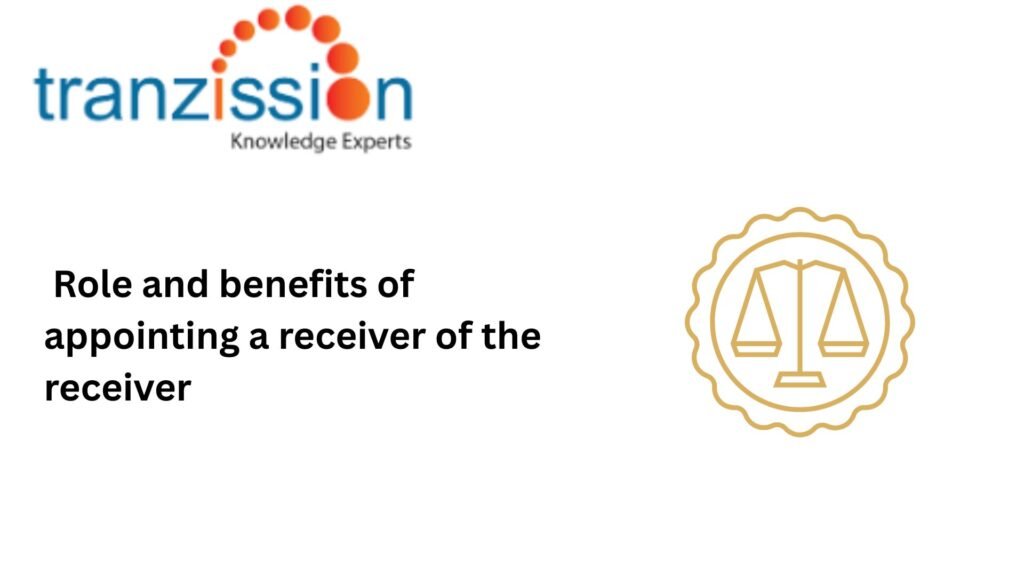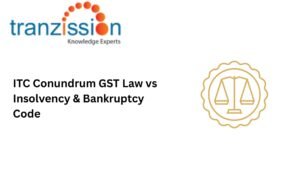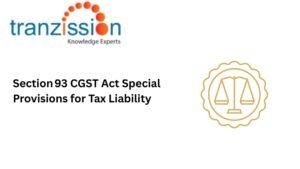
Role and benefits of appointing a receiver of the receiver

Table of Contents
The Insolvency and Bankruptcy Code, 2016 (“the IBC”) uses receivership as a strategic tool to manage a struggling company, aiming to secure assets, preserve their value, and facilitate a smoother resolution process. This involves appointing a resolution professional (RP) or liquidator, who takes control of the company’s assets and operations to stabilize their worth, and ultimately, either restructure the company or liquidate it in a more orderly manner. The benefits of appointing a receiver is crucial in this process, as they act as an independent custodian responsible for managing, safeguarding, and realizing the company’s assets. By doing so, the receiver ensures transparency, prevents asset dissipation, and maximizes recovery for creditors, thereby enhancing the overall efficiency and effectiveness of insolvency proceedings.
What is a Receiver?
A receiver is a court-appointed custodian who takes control of specified debtor assets—typically under a security instrument—to manage, protect, or realize them. Unlike corporate insolvency resolution process (CIRP) or liquidation, receivership focuses on the specific assets secured by a creditor’s loan, rather than the entire company’s insolvency. It is a tool for secured creditors to recover their debts when a company defaults, rather than a comprehensive process to resolve all outstanding debts and liabilities like liquidation or CIRP.
When Is a Receiver Appointed under IBC?
Under the IBC, a receiver can be appointed either before or during CIRP as an interim resolution professional (IRP) or resolution professional (RP), when there is a risk of asset dissipation or mismanagement. This appointment is triggered by creditor evidence of default, mismanagement of assets, or conflicts among stakeholders. The Adjudicating Authority may also consider factors like the company’s financial health, its ability to continue as a going concern, and the interests of various stakeholders.
Core Duties of a Receiver
According to the IBC, as an IRP or RP, the receiver has several duties, such as:
- Asset Protection: Their primary responsibility is to take control of the corporate debtors assets and ensure they are protected from damage, loss, or dissipation. This includes securing physical assets, financial instruments, and intellectual property.
- Asset Realization & Management: A receiver is responsible for realizing the company’s assets, which may involve selling them as a going concern or liquidating them. This also includes maximising stakeholder value by either operating assets as going concerns or liquidating them.
- Financial Oversight & Reporting: Such professionals are obligated to regularly report on the status of the receivership, including the financial condition of the company, amounts owed to creditors, and the progress of asset realization.
- Neutrality & Fiduciary Duty: Receiver must act impartially while ensuring equitable treatment for all stakeholders. This means that they must fairly distribute assets based on established priorities, including sacred creditors rights, while also considering the claims of unsecured and other parties.
Key Benefits of Receiver Appointment
Appointing a receiver to handle insolvency cases offer several benefits, such as:
- Enhanced Value Preservation: A receiver is appointed to protect and manage the company’s assets during the insolvency process, which helps prevent the dissipation or misuse of assets, and ensures they are available for creditors.
- Prevents asset erosion and protects value ahead of resolution or liquidation
- Efficient Recovery for Secured Creditors: It can be a more efficient way to recover debts compared to bankruptcy, thereby, yielding higher returns for creditors. Receivers can negotiate with creditors, restructure the company’s debts and sell assets to repay creditors.
- Operational Continuity: A receiver can manage the business as a going concern, potentially selling it as a whole and preserving its value, rather than breaking it up and selling individual assets, which may result in lower overall proceeds.
- Conflict-Free Administration: The receiver is an independent party appointed by the court or a secured creditor, ensuring impartiality. This helps prevent conflicts of interest and promotes a fair resolution for all stakeholders.
- Cost-Efficient Alternative: Receivership can be a faster and more efficient process than bankruptcy, saving time and costs. The receiver can quickly take control of the company and its assets, streamlining the resolution process.
Drawbacks & Limitations
While receivership under the IBC can be a useful tool for debt recovery, it also has drawbacks:
- Debtor Loses Control: Their primary obligation is to the creditor who appointed them, and other creditors may not be fully addressed, and their debts may not be recovered. Further, as management authority shifts, directors often face limited influence.
- Costs of Receivership: Receivership can be expensive, with the receiver’s fees and other professional costs being paid from the assets under their control. These costs can quickly deplete the available funds, especially if the receivership is lengthy.
- No Debt Discharge: It leads to the quick sale of assets, potentially at discounted prices, to recover the debt of the appointing creditor. This can leave little or nothing for other creditors and may not maximise the value of the assets. Further, receivership does not result in debt restructuring or discharge, only asset recovery.
Process & Legal Framework
- Appointment Mechanism: Courts can appoint receivers under the Code of Civil Procedure if it is deemed just and convenient, during litigation to safeguard property while the case is ongoing. Secured creditors, those who hold collateral for a loan, can also appoint receivers under the terms of their contracts. Both courts and secured creditors, give receivers authority over specific assets, as defined in a legal order or contact.
- Power and Authority: Receiver, when appointed by a court, operates with powers similar to a court-appointed manager, particularly regarding the management, sale, and protection of assets involved in a legal dispute. They act as an officer of the court, ensuring the preservation of assets and maintaining the status quo of the property under dispute until the case is resolved.
- Transition & Termination: Their role concludes upon the appointment of an IRP, RP, or liquidator, or when the court order appointing the receiver is revoked. This signifies a transfer of responsibility or managing the company or its assets from the receiver to the appointed insolvency professional or the courts decision. Read more Moratorium and Consumer Penalties under the IBC
Stakeholder Considerations
- Secured Creditors: Secured creditors can benefit from prioritizing receivership, as it allows for the swift enforcement of their collateral and the protection of tis value. Receivership, as opposed to bankruptcy, offers a potentially faster and more direct path to recovering debts by allowing secured creditors to seize and sell the pledged assets without the complexities and delays often associated with bankruptcy proceedings.
- Insolvency Professionals: The role of IPs as IRPs, RPs or liquidators and receivers play distinct but sometimes overlapping roles in insolvency proceedings. IPs are appointed to manage the resolution or liquidation of a company’s assets under the IBC, and receivers are appointed to manage and sell assets, often outside of the formal IBC process. Coordination between both is crucial to ensure a smooth and efficient process, especially when both are involved in the same case.
- Corporate Debtor & Directors: In a receivership, a corporate debtor and its directors experience a loss of authority as control is transferred to a receiver, but this can lead to more orderly asset management and potential conflict mitigation among stakeholders.
Conclusion
Receivership, when implemented under the IBC, plays a crucial role in safeguarding assets, improving recovery rates, and upholding the fairness of the insolvency process. It contributes to the overall integrity of the IBC by providing a mechanism to address potential misconduct or mismanagement during the possession. It helps ensure that the interests of all stakeholders, including creditors, are considered. Further, the presence of a receiver can deter fraudulent activities and promote a more orderly and legitimate resolution.





